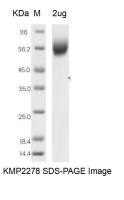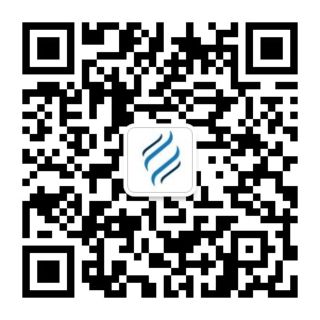Human ILT3 Protein, Fc Tag
-
产品编号
KMP2278
-
别名
白细胞免疫球蛋白样受体 B 亚家族成员 4, Leukocyte immunoglobulin-like receptor subfamily B member 4, ILT3
-
规格
- 50ug
- 100ug
- 200ug
| Alias | 白细胞免疫球蛋白样受体 B 亚家族成员 4, Leukocyte immunoglobulin-like receptor subfamily B member 4, ILT3 |
| Catalog Number | KMP2278 |
| Product Description | The Human ILT3 Protein(KMP2278) is produced in HEK293 Cells and the target gene encoding Gln22-Glu259 is expressed with a Fc tag at the C-terminus. |
| Molecular Name | ILT3 |
| Species | Human |
| Host | HEK293 Cells |
| Size | 50ug, 100ug, 200ug |
| Purity | >90% as determined by SDS-PAGE |
| Purification | Affinity purification |
| Endotoxin | <1.0 EU/ug determined by the LAL method |
| Formulation | PBS, pH7.4 |
| Background | Mouse Leukocyte Immunoglobulin-like Receptor Subfamily B Member 4(LILRB4/CD85k/ILT3) is an approximately transmembrane glycoprotein that negatively regulates immune cell activation. Mouse LILRB4 consists of a 215 amino acid(aa) extracellular domain with two Ig-like domains, a 22 aa transmembrane segment, and a 75 aa cytoplasmic domain with 3 immunoreceptor tyrosine-based inhibitory motifs(ITIM). Within the ECD, mouse LILRB4 shares 45% and 77% aa sequence identity with human and rat LILRB4, respectively. Alternative splicing of mouse LILRB4 generates a potentially soluble isoform that lacks the transmembrane segment. LILRB4 is expressed on dendritic cells(DC), monocytes, macrophages, and vascular endothelial cells(EC). Ligation of LILRB4 triggers ITIM-mediated inhibition of cellactivating signaling, leading to enhanced immune tolerance and reduced allogeneic graft rejection. Soluble LILRB4 induces the differentiation of CD8+ T suppressor cells(Ts) that can inhibit the effector functions of CD4+ Th cells and CD8+ CTL. In turn, CD8+ Ts cells induce LILRB4 up-regulation and a tolerogenic phenotype in monocytes, DC, and EC. |
| SDS-PAGE |  |
| Predicted Molecular Weight | 19.13 kDa |
| Storage Condition | Aliquot and store at -20℃ to -80℃. Avoid repeated freezing and thawing cycles. |
| Shipping Condition | In general, the proteins are provided as lyophilized powder which are shipped at ambient temperature. They are shipped out in dry ice if supplied in liquid form. |
| Uniprot ID | Q8NHJ6 |
| References | 1.Nat. Immunol. 3:237-243 (2002) 2.J. Immunol. 176:2790-2798 (2006) 3.J. Biol. Chem. 284:34839-34848 (2009) 4.BMC Immunol. 10:56-56 (2009) 5.J. Immunol. 200:1207-1219 (2018) 6.Nature 562:605-609 (2018) 7.Int. Immunol. 33:447-458 (2021) 8.J. Exp. Med. 185:1743-1751 (1997) |
| Function | Inhibitory receptor involved in the down-regulation of the immune response and the development of immune tolerance (PubMed:11875462). Receptor for FN1 (PubMed:34089617). Receptor for apolipoprotein APOE (PubMed:30333625). Receptor for ALCAM/CD166 (PubMed:29263213). Inhibits receptor-mediated phosphorylation of cellular proteins and mobilization of intracellular calcium ions (PubMed:9151699). Inhibits FCGR1A/CD64-mediated monocyte activation by inducing phosphatase-mediated down-regulation of the phosphorylation of multiple proteins including LCK, SYK, LAT and ERK, leading to a reduction in TNF production (PubMed:19833736). This inhibition of monocyte activation occurs at least in part via binding to FN1 (PubMed:34089617). Inhibits T cell proliferation, inducing anergy, suppressing the differentiation of IFNG-producing CD8+ cytoxic T cells and enhancing the generation of CD8+ T suppressor cells (PubMed:16493035, PubMed:19833736, PubMed:29263213). Induces up-regulation of CD86 on dendritic cells (PubMed:19860908). Interferes with TNFRSF5-signaling and NF-kappa-B up-regulation (PubMed:11875462). Activated by APOE on acute myeloid leukemia (AML) cells which leads to suppression of T cell proliferation and promotion of AML cell migration and infiltration (PubMed:30333625). LILRB4 signaling on AML cells is mediated by PTPN11/SHP-2 (PubMed:30333625). |





 0
0
